Writing Comes Alive
A nearby garden becomes an idyllic classroom for a nature writing course
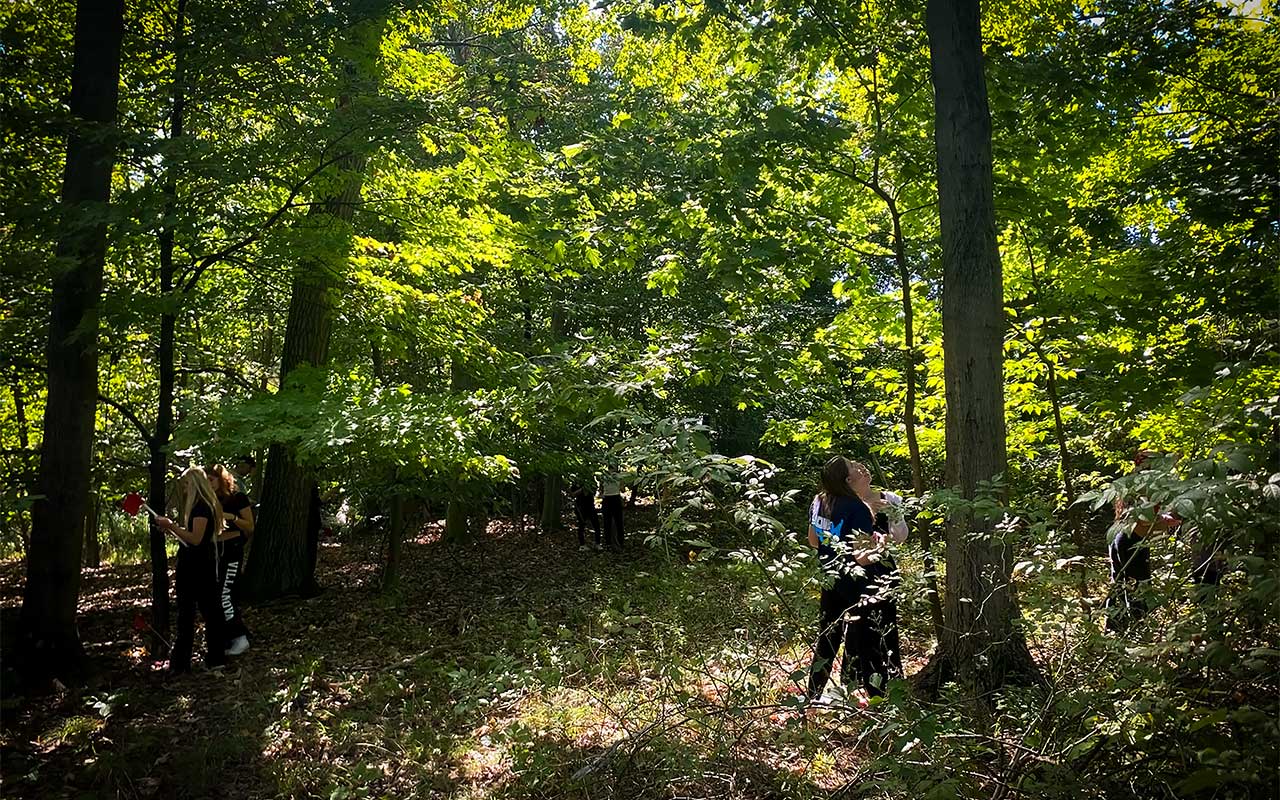
How Villanova’s natural landscape enhances the academic
experience of our student-scholars
The hands-on teaching, learning and research that happen on Villanova’s 260-acre campus aren’t limited to the academic buildings. Outdoor spaces are utilized every day by faculty, students and staff across disciplines. Villanovans from departments such as Biology, Geography and the Environment, Civil and Environmental Engineering and Sustainable Engineering have access to a landscape that offers boundless possibilities for academic exploration. It’s an environment where discoveries are made and innovation and creativity flourish.
Travel to West Campus beyond the soccer complex and the tennis courts, and there are spaces that provide a natural laboratory for researchers, educational experiences for students and a preserved habitat for wildlife. Home to a wide array of flora, fauna and fungi, students can move from one ecosystem to the next without stepping beyond the University’s borders.
There’s a meadow with running water where graduate students identify plant, animal and bird species. A class of Environmental Science students use a nearby forest plot, also on West Campus, as a living laboratory to measure tree diameter in order to calculate biomass and carbon storage. Not far from the Charles Widger School of Law’s John F. Scarpa Hall, researchers are wading knee-deep in a wetland that they are monitoring and tracking for water quality.
With the support of a dedicated Grounds Department, the outdoor environment at Villanova offers students unique research and learning opportunities to better understand the natural world.
In the midst of the distinctive Collegiate Gothic buildings that define Villanova’s landscape, there are mini nature sanctuaries that remain free from development. There’s a meadow full of goldenrod with a creek running through it on West Campus behind the tennis courts that’s an eco-friendly haven for wildlife and the ideal living laboratory for Biology students.
Faculty frequently take their students to this area to conduct a bioblitz—a rapid assessment of biodiversity in which they find and identify as many species as possible in a short period of time. Residing there are salamanders, frogs and toads as well as turtles and snakes, and, if you look up, you might see a red-winged blackbird.
Since arriving at Villanova in 2004, Vik Iyengar, PhD, professor and assistant chair of the Department of Biology, has taught a variety of courses including Animal Behavior, Entomology and Evolutionary Ecology — and much of his students’ classroom time is spent outdoors.
Dr. Iyengar’s students use the meadow on West Campus to conduct many laboratory exercises. “West Campus is a particularly species-rich area,” explains Dr. Iyengar. “We work closely with the Grounds Department to ensure that we preserve this natural space, promote native species and maximize the faculty and student use by mowing access lanes.”
For Animal Behavior, Dr. Iyengar and his students do mark-release-recapture studies with praying mantises to estimate population size. For Entomology, they sample the area regarding insect diversity. And for Evolutionary Ecology, they study how patch size and number of flowers affect pollinator visitation.
Dr. Iyengar has observed many “aha” moments for his students while doing this fieldwork. He recalls, “We had talked in my entomology class about the phenomenon of female praying mantises biting off the heads of males while mating, but it was incredible to see the open-jawed, wide-eyed look on the students’ faces when we encountered females paired with headless males on West Campus.”
In another memorable moment of discovery, students noticed depressions in the dry ground where sand appeared to be moving at the bottom of a cone. Upon closer inspection, students found antlions sitting at the bottom of these pitfall traps, lying in wait for ants and other small insects to fall in. Both of these represent the real-life manifestation of organisms and concepts that were discussed in Dr. Iyengar’s classes.
Allison Covey, PhD, a professor of Ethics, uses Villanova’s campus in her course Animal Ethics. A major project that’s assigned to her students is mapping creatures they encounter on the grounds of the University and assessing how well these birds, squirrels, rabbits, and even the occasional deer, are thriving. The class asks what moral obligations we might have to the many other species that call Villanova home and considers how humans and other animals can mutually flourish here.
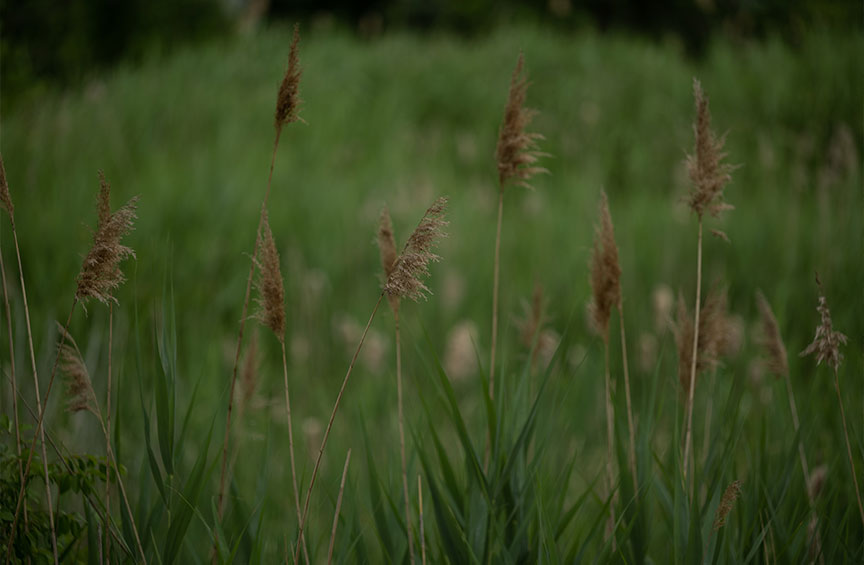
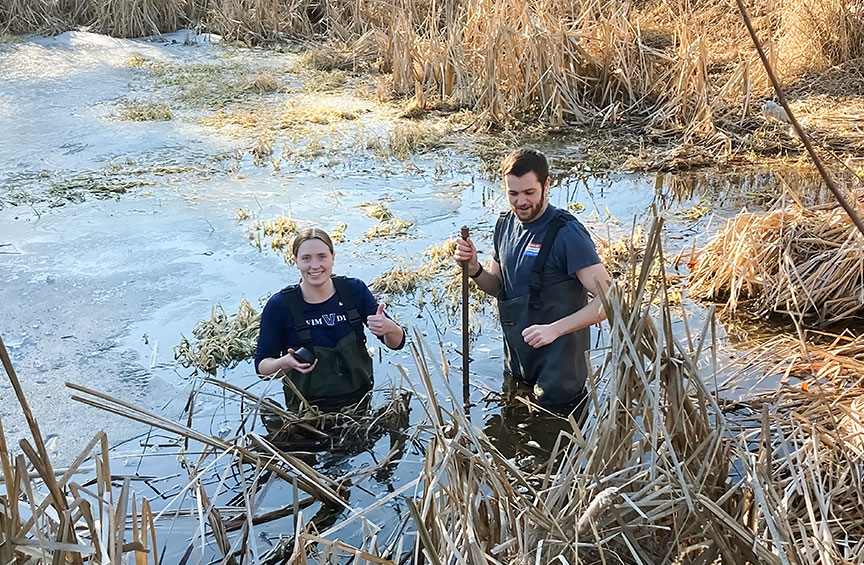
Since the Center for Biodiversity and Ecosystem Stewardship (CBEST) launched in 2019, its primary components have been education and outreach. The center works to spread the word about the importance of biodiversity and the effects of climate change on ecosystems across the globe.
Recent events on campus have included a community bioblitz with faculty, students and other volunteers, public lectures on topics like the local bat population, and a native plant sale at the Biology Greenhouse near the Mendel Science Center.
In the future, CBEST faculty that specialize in reptiles and amphibians (Aaron Bauer, PhD, and Todd Jackman, PhD, both from Biology) are planning minor augmentations to existing campus features to create better habitats for salamanders, frogs and turtles.
So in the spirit of the center’s mission to learn about and contribute to a healthy ecosystem, Samantha Chapman, PhD, professor and co-director of CBEST, decided to get her hands dirty, literally, by starting a pollinator garden on campus with her colleagues Kim Scott and Tess Adgie, also from Biology, and with assistance from Charlie McNulty of the Grounds Department.
“It’s like urban gardening,” says Dr. Chapman of the space designated to her and her students against a wall near a busy road. But it was the perfect location for what she had in mind. “I wanted my students to experience nature and learn from it, so we planted perennial natives and we’re observing how they tolerate adverse conditions like stormwater runoff and extended drought periods.”
What they created is a patch blooming with coral bells, milkweed and goldenrod. And that in turn is attracting hummingbirds, bees, beetles and even endangered monarch butterflies. It might sound like something small, but it fills Dr. Chapman with a lot of hope. “As a climate change scientist, I view this pollinator garden as an example of the kind of thing that makes an impact really quickly,” she says. “We planted this and now we’re providing a place for insects and other creatures to survive and thrive.”
Not long after establishing the pollinator garden, CBEST was invited to exhibit at the 2022 Philadelphia Flower Show, the nation’s largest and longest-running horticultural event. A team of Villanova students and researchers, with assistance from the Grounds Department, designed and implemented the exhibit called “Blooming Biodiversity,” which showcased a total of 108 Pennsylvania plants. Being new to this kind of undertaking, the team experienced a distinctly gratifying and proud moment when the project received four awards, including a silver medal for an educational major exhibit.
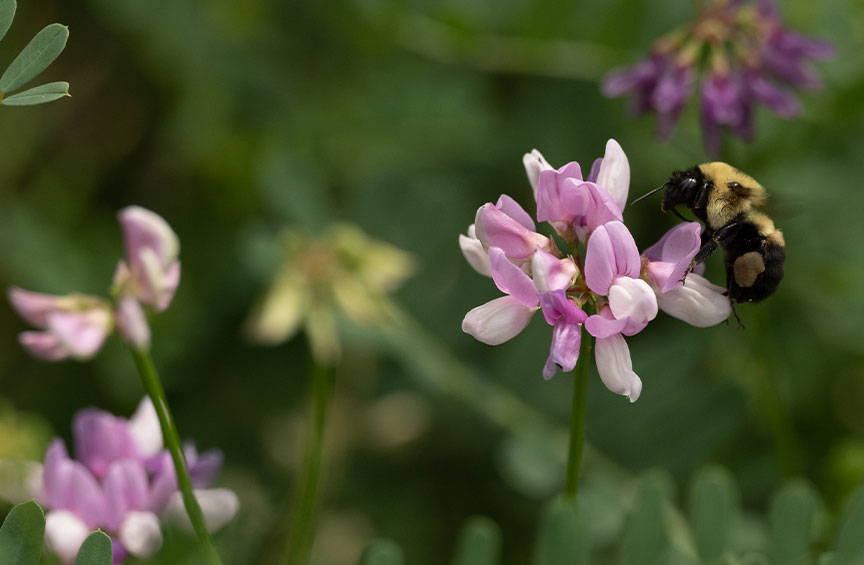
“ I wanted my students to experience nature and learn from it, so we planted perennial natives and we’re observing how they tolerate adverse conditions like stormwater runoff and extended drought periods. ”
- Samantha Chapman, PhD
Located steps away from the CBEST pollinator garden is the Water Resources Lab. Amanda Garzio-Hadzick, who served as the lab's director until August 2023, passed through the thriving habitat for pollinators on her way to the ground-floor laboratory in the Chemical Engineering building. “As the director, she spent most of her time at the lab bench testing water samples that students collected from stormwater wetlands, infiltration trenches and rain gardens on Villanova's campus."
Our constructed stormwater wetland by the law school is a good example of a stormwater control measure that always has water in it," explains Garzio-Hadzick. "We're looking at many water quality indicators - such as how much sediment and nutrients are in the water - and trying to understand how the water quality changes as it interacts with plants and organisms while moving through the wetland - and then we store this information in a powerful database."
Every month, lab staff and a group of graduate students try to capture a storm event and determine the effects. Summer is specifically busy in terms of fieldwork and experimental time for the Water Resources Lab — it’s also a productive period for seeing trends and asking questions as intense storms increase in the region.
“We get all sorts of measurements like pH and conductivity values and then we look at nutrients like nitrogen and phosphorus,” explains Garzio-Hadzick. This is important information because it’s used to determine the level of contaminants present in the water. An overabundance of nitrogen and phosphorus can cause the water to become polluted.
Another pollutant of concern for the lab is what is known as “forever chemicals” in the water supply. Called “forever chemicals” because they don’t break down over time, they can be toxic to both humans and wildlife, so the Water Resources Lab is collaborating with the Department of Geography and the Environment to decide the best way to manage them.
“Our researchers, both faculty and students, are taking the data and looking at it in new and different ways,” says Garzio-Hadzick. “They bring their strengths, whether that’s modeling, artificial intelligence or machine learning, to these innovative research projects.”
For Achira Amur ’22 PhD—a postdoctoral scholar with the Villanova Center for Resilient Water Systems—that research relied completely on monitoring the rain garden on West Campus. “I used the extensive data available to me to understand the performance of green infrastructure systems,” explains Dr. Amur. “It’s really exciting to interact with the environment and test out different ideas to help understand the functionality of the site and assess best practices for future designs.”
Dylan Popp ’24 MA, a graduate research assistant, is interested in phosphorus, specifically measurements to gain a better understanding of the removal of the chemical element throughout the constructed stormwater wetland. “The wetland that provides this data is invaluable to me,” says Popp, who is not only grateful for the opportunity to use Villanova as a living lab but has come to enjoy the time he spends at this site, in particular his wildlife encounters.
“ It’s really exciting to interact with the environment and test out different ideas to help understand the functionality of the site and assess best practices for future designs. ”
- Achira Amur '22 PhD
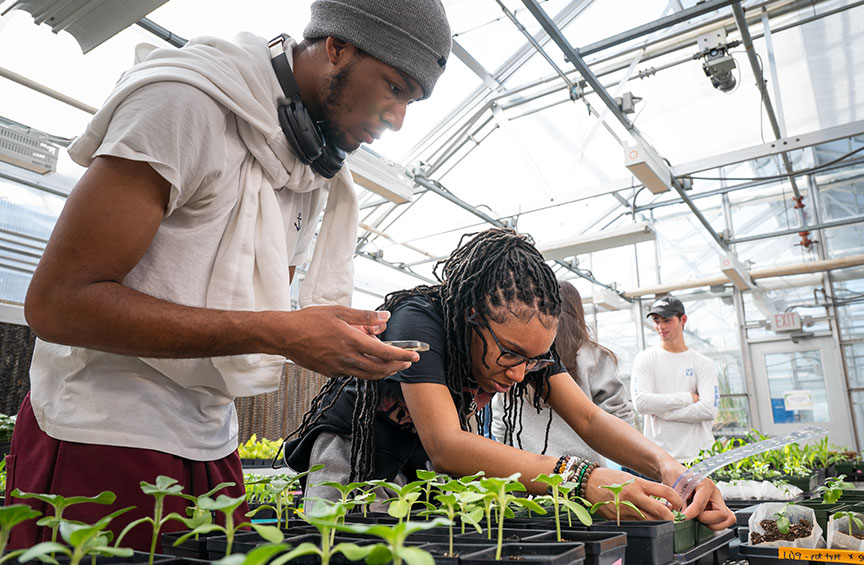
It isn’t only Villanovans who appreciate the well-maintained and inviting outdoor environment of the campus, including the magnificent trees that reside here. For seven consecutive years, the Arbor Day Foundation has designated Villanova as a Tree Campus Higher Education Institution. There are currently 410 campuses across the nation with this recognition — it’s an honor given to colleges and universities in acknowledgment of leadership that promotes healthy trees and engages students and staff in the spirit of conservation.
“As stewards of Villanova’s beautiful campus, we take great pride in caring for and improving the tree collection on campus so that future generations can continue to enjoy the beauty and shade that we have enjoyed,” says Robert Morro, vice president for Facilities Management.
There are practical reasons as well to admire and honor the University’s trees. “We plant the trees because we need to grow the canopy,” says Horticultural Supervisor Hugh Weldon. “Trees help cool the campus and reduce the urban heat island effect that threatens humans and wildlife. The trees and vegetation we plant and maintain help by providing shade.”
For nearly 10 years, Weldon has been channeling a passion for trees into interesting and informative tours of campus. Considered the go-to authority for identifying the vegetation within Villanova’s borders, Weldon is a font of knowledge when it comes to trees and also happens to have an interesting anecdote or tidbit to go with every unique species.
Any dendrophile (tree lover) to visit the University would be remiss not to grab a map highlighting Villanova’s 34 most notable trees or sign up for one of Weldon’s tours in the spring and fall. Weldon is considered a resource to faculty, asked to lecture in classes and lead private tours for students.
Among the tree highlights are a state champion sourwood that’s 57 feet tall, a bur oak that’s the oldest tree on campus estimated to be more than 150 years old, and a dawn redwood that’s considered a “living fossil” and was once thought extinct.
Impossible to overlook is a magnificent copper beech that’s about 130 years old on the front lawn along Lancaster Avenue. Also of note are a young crab apple orchard in front of St. Thomas of Villanova Church and clusters of pawpaws that produce the largest edible fruit indigenous to North America.
“Having this natural beauty where wildlife thrives makes campus feel special,” says Garzio-Hadzick. “Villanova is a great place to connect with nature, and if we create connections to nature it will hopefully lead to better decisions and an improved environment for future generations.” ■
“
I go to West Campus over to the meadow way in the back where the little creek runs. It’s very peaceful there.”
- Hugh Weldon, horticultural supervisor, Grounds Department
“
Spending a lot of time in the wetland, I have become fond of it for the diversity of animals I encounter there.”
- Dylan Popp ’24 MA
“
I always enjoy spending time on West Campus in the goldenrod fields, as every visit leads to new observations and reasons to marvel at the natural world.”
- Vik Iyengar, PhD, professor and assistant chair of the Department of Biology
“
I love the whole campus in the fall—in particular, the sycamore tree in the rain garden.”
- Achira Amur ’22 PhD, postdoctoral scholar, Villanova Center for Resilient Water Systems
NEXT IN FEATURES
Villanova’s College of Professional Studies offers many paths for students to become what they are not yet